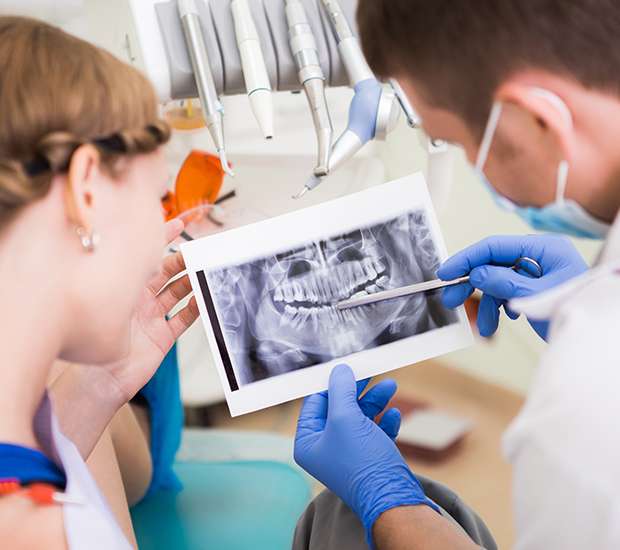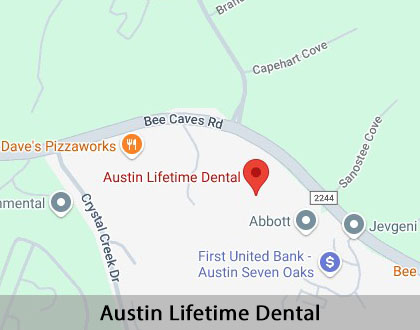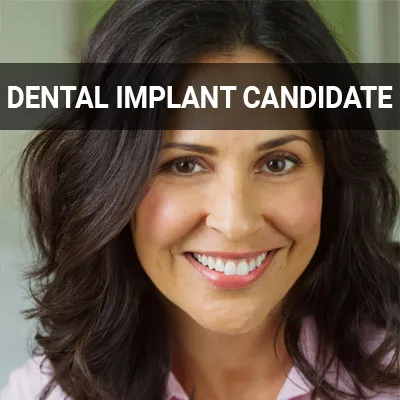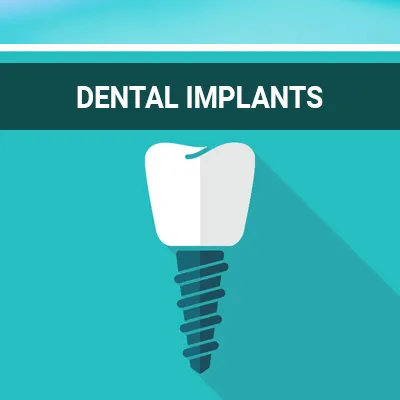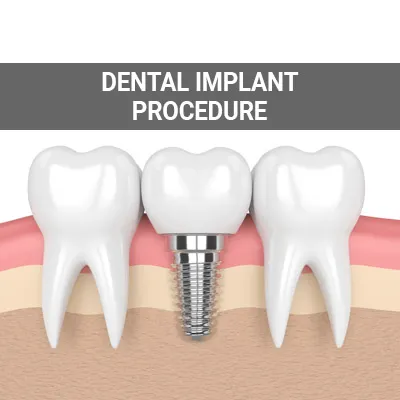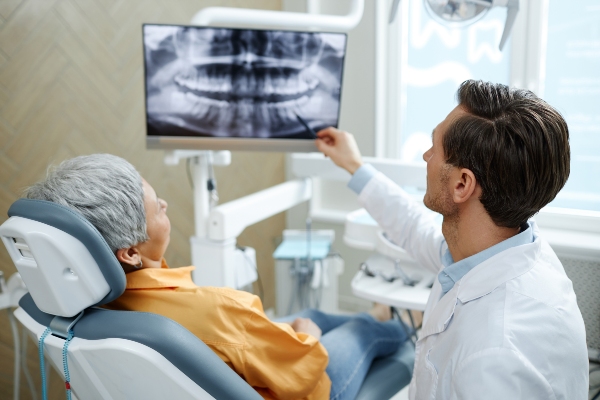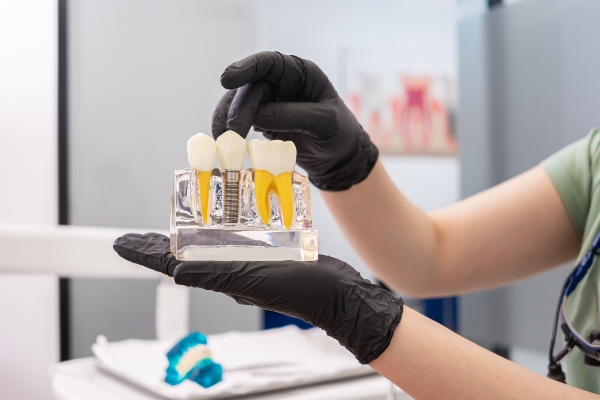Will I Need a Bone Graft for Dental Implants Austin, TX
For people who have one or two missing teeth, dental implants are one of the most effective tooth restorations available. The implant needs support from a sufficiently thick mass of jawbone to support the dental restoration. A bone graft procedure involves transplanting bone to the implant site to make the jawbone thicker.
Bone graft procedures for dental implants are available at Austin Lifetime Dental in Austin and the surrounding area. Although bone grafting is an option, it is not always necessary. If you want to know if you would need a bone graft for dental implants, call our office at (512) 387-9049 to book a consultation with Austin Lifetime Dental.
Jaw Mass and Dental Implants
Dental implant restoration involves the placement of titanium implants into the jawbone. Over time, the implant will fuse with the jawbone in a process known as osseointegration. This ensures that dental implants have the same function and appearance as natural teeth. However, for osseointegration to occur, the patient must have enough jawbone density to support the implants.
Bone density may diminish due to resorption. After tooth loss, the bone in that area can resorb by up to 25 percent within the first year, and will only get worse without proper treatment. The teeth and roots stimulate the jawbone and serve as a signal that the alveolar bone is serving its purpose. When the tooth is missing, the body transfers bone material from the jaw to other areas of the body.
Other causes of bone loss include gum disease, injury or decay, infections, and developmental defects. Anyone who has lost a tooth or is scheduled for tooth removal needs to plan for tooth replacement or procedures to reduce or stop bone resorption. Regular visits to the dentist can help to lower the risks.
“After tooth loss, the bone in that area can resorb by up to 25 percent within the first year and it only gets worse.”
Types of Bone Grafts
A bone graft is a procedure done to repair or rebuild the bone by transplanting bone tissues. After grafting, the bone will be strong and thick enough to hold dental implants. The transplantation process allows the dentist to recreate the missing bone and supporting tissues. The types of bone grafts include:
- Autograft – The bone for the grafting procedure can come from the patient’s body in parts like the hip, chin, jaw, or leg. An autograft means that the samples come from the patient with no risk of rejection.
- Allograft – Sometimes, the bone can be from another person, like a cadaver. This type is specially treated to remove bacteria and other biological elements to ensure the graft material is purely bone material. There are minimal to zero risks of rejection and saves the patient from a secondary bone transplant process.
- Xenograft – these are bone material taken from animal sources. The samples undergo treatment to make them safe to use for the patient.
- Other times, the bone can also come from a synthetic biocompatible material.
The choice of the source of the bone graft material depends on what the dentist believes would be the most suitable for the patient.
“A bone graft is a procedure done to repair or rebuild the bone by transplanting bone tissues.”
How Bone Grafting Works
There are different types of bone grafts, including autograft, allograft, xenograft, and an alloplastic graft. The majority of procedures use real bone, although a synthetic bone material is used for an alloplastic graft. The steps involved depend on the type of bone grafting procedure. It typically involves taking either natural bone or a synthetic bone material and placing it into the jawbone above the missing tooth through a minor surgical procedure. The bone must then heal and fuse with the existing bone in the area, which typically takes two to three months.
Bone grafting is a fairly common procedure. A 2016 study found that nearly half of 800 people with dental implants required a bone graft prior to implantation. A bone graft is beneficial for patients as it provides additional support to the dental implant. Otherwise, the dental implant placement process may have a higher risk of failure. The bone augmentation can improve the appearance, function, and oral health of the patient.
“It typically involves taking either natural bone or a synthetic bone material and placing it into the jawbone above the missing tooth through a minor surgical procedure.”
Check out what others are saying about our dental services on Yelp: Will I Need a Bone Graft for Dental Implants in Austin, TX
What to Expect After the Procedure
Although patients differ in their condition, oral health status, and recovery, there are various ways to help the jaw heal faster. Bone grafting may result in swelling, bruising, and minor bleeding of the gums after the procedure. To recover as quickly as possible, stick to soft foods and avoid dark beverages or sugary drinks. Along with that, it is essential to practice good oral hygiene through a gentle brushing and flossing routine and using mouthwash.
We encourage patients to look for a qualified oral surgeon or implant specialist as they are most skilled at bone graft procedures. It is important that patients play an active role in their oral health and understand their treatments as well as who is performing them. As your dentist about their experience with bone grafting and how successful their treatments were. It may be a good idea to look at before-and-after testimonials and patient reviews online prior to scheduling a consultation.
“To recover as quickly as possible, stick to soft foods and avoid dark beverages or sugary drinks.”
Questions Answered on This Page
Q. How does the bone grafting procedure work?
Q. What can I expect after a bone graft procedure?
Q. What alternative options are available in place of bone grafting?
Q. How does jaw mass affect dental implantation?
Q. What are the different types of bone grafts?
People Also Ask
Q. How should someone prepare for dental implant surgery?
Q. How are dental implants used to replace missing teeth?
Q. What happens after the dental implant procedure?
Q. How can I prepare for my first implant procedure?
Q. When should people seek an implant dentist?
Q. What types of foods and activities should be avoided during the recovery process?
Alternative Options
Although bone grafting may be the only procedure available for single-tooth implants, there are a few alternative options for those seeking full arch or full mouth dental implants. These options include a full arch prosthesis or a zygomatic prosthesis.
Full arch prostheses are fastened to the jaw using 4 to 6 implants that provide adequate security. For this procedure to work, the patient must have 4 to 6 areas of sufficient bone to effectively place the implant arch. Zygomatic prostheses are long implants embedded in the zygoma, or cheekbone, as opposed to the jawbone. Since the implant is not attached to the jaw, a bone graft is not necessary even for patients with low bone density. A review of 2,402 Zygomatic implants showed a success rate of 96.7% over a 12-year period. Zygomatic implants are found to be the safest, most effective procedure in oral surgery.
“Since the implant is not attached to the jaw, a bone graft is not necessary even for patients with low bone density.”
Frequently Asked Questions About Bone Grafting
Q. What are the benefits of bone graft procedure?
A. With bone grafts, patients who may otherwise not be eligible for dental implants will be able to get dental implants. The procedure boosts the jawbone mass to make dental implant restoration successful over the years. After the jaw heals following a bone graft, it will be strong and stable to hold implant posts.
Q. What are the qualities of a good bone graft specialist?
A. It is important that you choose a bone graft specialist with the training and experience for performing the procedure. Preferably, the dentist should have a certification from the American Academy of Implant Dentistry. The procedure is more likely to be successful if handled by an experienced dentist.
Q. How do I know if the bone graft specialist has experience?
A. During your consultation with the dentist, you can ask for references and before and after pictures from previous procedures. You can also ask for an explanation about the With, including the risks, side effects, and medications. You can inquire about continuing education courses to be sure the dentist is up to date on new technologies, techniques, and medications.
Q. Can I get dental implants immediately after bone augmentation?
A. If there is adequate bone tissue around the implant, the dentist may place the implant during the bone augmentation procedure. With time, the bone augmentation will cause new bone to grow around the implant. If a significant part of the bone is missing, placing implants immediately after bone grafting is not possible or advisable.
Quality Dental Services Can Transform Your Smile
By visiting us as soon as possible, our team can help get you the professional treatment you need. Instead of waiting around and allowing the symptoms to get worse, we can provide you with treatment options.
Dental Implant Terminology
Call Us Today
We offer bone grafting for dental implants and help patients through the process. If you are interested in learning more about bone grafts as well as the implant process in general, then get in touch with us at 512-387-9049 today.
Helpful Related Links
- American Dental Association (ADA). Glossary of Dental Clinical Terms. 2025
- American Academy of Cosmetic Dentistry® (AACD). Home Page. 2025
- WebMD. WebMD’s Oral Care Guide. 2025
About our business and website security
- Austin Lifetime Dental was established in 2022.
- We accept the following payment methods: American Express, Cash, Check, Discover, MasterCard, and Visa
- We serve patients from the following counties: Travis County
- We serve patients from the following cities: Austin, West Lake Hills, Barton Creek, Rollingwood, Lost Creek, Tarrytown, Hyde Park, Oak Hill, Austin Lake Hills and Bee Cave
- Norton Safe Web. View Details
- Trend Micro Site Safety Center. View Details
Back to top of Will I Need a Bone Graft for Dental Implants
